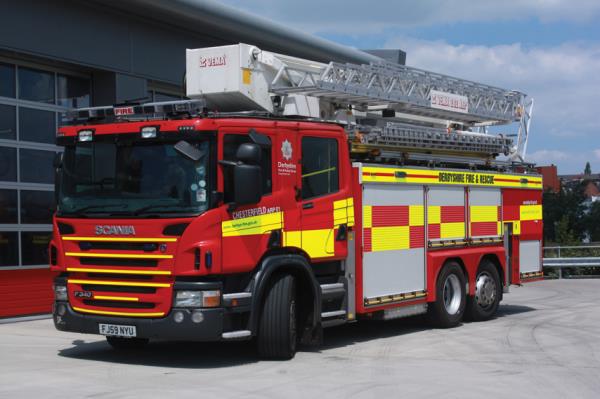17 February 2020

Derbyshire Fire & Rescue Service (DFRS) covers a service area of 1,000 square miles, which includes a variety of urban and rural communities, with a population of around one million people.
Its operational area includes the Peak District National Park, underground caverns and historical sites such as Chatsworth House and Bolsover Castle.
The service operates and maintains 31 fire stations, four area offices and has a joint police and fire headquarters in Ripley, Derbyshire.
DFRS pushed forward with a digital radio communications upgrade in 2019 as part of its commitment to digital transformation within the firefighting industry.
After DFRS reviewed a number of radio technologies, it chose Radiocoms to supply the upgrade to a Motorola Solutions MOTOTRBO radio system to replace the existing analogue radio network. The technology is designed to cope effectively within the harshest of environments.
“Clear, concise communication is essential in the effective delivery of a modern fire and rescue service, working to make Derbyshire safer together,” says Derbyshire Fire & Rescue Service Response Area Manager Phillip Mitchell. “It is critical that we have a reliable and robust communications system that provides uninterrupted service for every situation that our Firefighters encounter.”
The aim of the new system was to create robust and clear communications with functions which address the specialised needs of firefighters. Radios selected by Derbyshire Fire & Rescue Service were the rugged, easily operated MOTOTRBO DP4601e and MOTOTRBO DP4401Ex ATEX GPS-enabled hand portables which in addition to all the expected basic functions have a number of features ideally suited for FRS purposes.
Other pre-requisites were a prominent orange emergency button to summon help with one touch, location and telemetry sensors, design for easy operation when wearing gloves and the latest energy technology also delivers up to 28 hours of battery life for 3-shift working, plus an improved receiver boosts range by up to 8% compared to previous models.
Programmed and aligned to work within NOG (National Operating Guidelines) the new radios have provided the fire service with a resilient, operational ready communications device that they can rely on during unpredictable situations.
Now, even when in the depths of a building staff will hear every broadcast which is imperative should an emergency evacuation be initiated.








